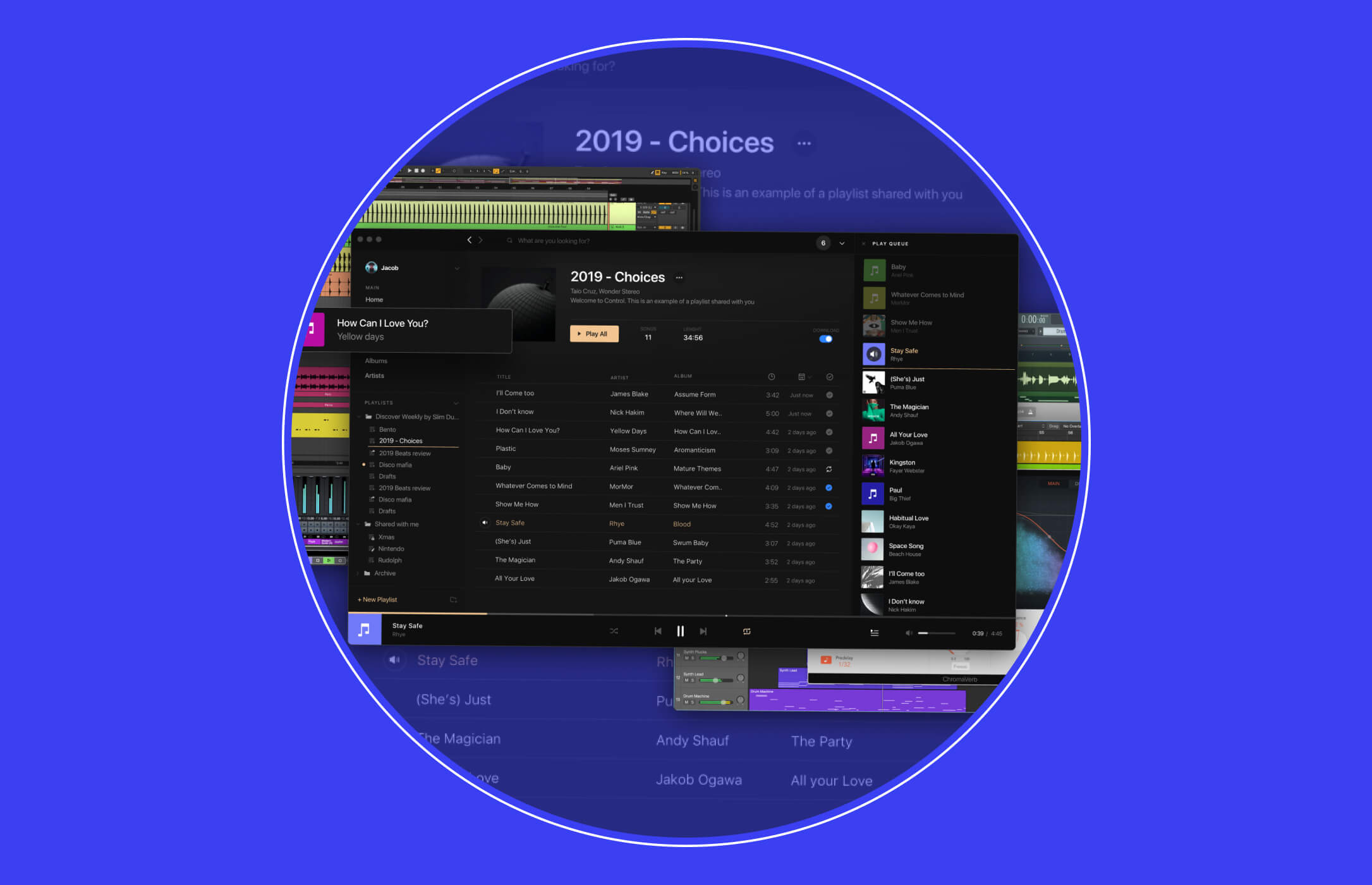What is Out of Phase Audio and How Can It Be Fixed
Recording music in a home studio isn’t always as straightforward as it seems. If you’re recording yourself with just simple equipment including a microphone and an audio interface, you might run into complicated technical problems.
Out-of-phase audio is one of the most perplexing issues that new and intermediate producers face – but what exactly triggers phase problems? How do you patch them and what do they look like? It’s easy to get frustrated when dealing with such a complicated problem.
It doesn’t have to be overwhelming, however. When you understand why phase complications occur and how to prevent them, they’re easy to detect and repair. We’ll cover everything you need to know about out-of-phase audio in this post.
What is the phase in the audio sense?
The direction of a sound wave in time is referred to as the phase of audio. Consider a graph of a sine wave – the x-axis direction of the wave determines its phase; the step of a periodic waveform indicates where the pattern of the wave starts along with its shape.
The expression periodic refers to how the waveform of a sound repeats in the same pattern over and over. The wave’s starting point passes through a potential place in the form as you pass the wave forward or backward in time until it repeats.
Step transitions are forward or backward variations in the starting stage. Since you’ve come full circle until you’ve moved to the next period of the waveform, phase shift is measured in degrees.
Why is phase important?
Phase issues may have a significant impact on the sound of your recordings. When you record a source with more than one microphone at the same time, they come into play.
The explanation for this is because of a phenomenon known as disruptive interference. Consider two similar signs – if their waveforms start at the same time, they are totally in phase. The two signals would be completely out of balance if one of them was phase-shifted by 180 degrees. Their two waveforms will be at the apex of the cycle at the same time. When identical waveforms that are 180 degrees out of phase are added together, disruptive interference cancels them out entirely.
This means that when the two signals are combined, the outcome is silence!
You’ll never capture two perfectly similar signals with two separate mics on the same source in the real world, but if the signals are connected, there may be issues. The traditional method of recording a bass guitar with a DI box and a mic’d up amp is one example.
Sound can be out of step with the DI because it takes time to fly through the air to enter the microphones. When identical waveforms that are 180 degrees out of phase are added together, disruptive interference cancels them out entirely. The relationship between the two signals varies if there is a phase shift.
At first, the influence of minor phase variations between two microphones can go unnoticed. However, the more “ahead of schedule” they are, the more they can begin to contend.
How can I identify phase problems?
Fortunately, when two signals are badly out of phase, it’s easy to hear. When two similar tracks are mixed, they can sound thinner, tinnier, or harsher, indicating that they have a phase problem.
Insert a utility plugin on one channel and use the phase symbol button to invert the phase by 180 degrees to be certain. If the low end and punch of the sounds return as a result, phase is the source of the problem.
Use your DAW’s phase similarity meter to measure the phase relationship of signals that don’t cancel out significantly. Here’s a quick tutorial about how to read it.
How can you solve phase problems?
You’ll need ways to prevent the worst issues that out-of-phase audio can create in your sessions. Here are three approaches to dealing with the most popular music development process issues:
1. Avoid them at the beginning
The easiest way to deal with phase problems is to avoid them altogether.
Mic preamps and audio interfaces have a toggle with the diameter symbol, much like the utility plugin in your DAW.
The circuitry of the preamp can be used to invert the polarity by 180 degrees. If you’re trying to figure out if two signals are out of phase, click it and pay attention to the outcome. If pressing the switch brings back a lot of low end and punch, the signals are probably out of phase.
You may anticipate a signal to be similar to 180 degrees out of phase in many recording conditions. Recording a snare drum with both a top and bottom microphone is the most popular. The sound waves emitted by the top and bottom heads would be out of phase. If you’re recording both sides of the snare, double-check your step!
2. Decide how far apart the microphones should be.
When setting up microphones, pro engineers will often use a length of cable to make measurements. They’re using the 3:1 approach, which is an eyeball method for reducing the impact of poor step partnerships. As a rule of thumb, additional microphones should be placed 3 times further away from the source than the first.
Assume you’re filming an electric guitar cabinet with your key microphone from a distance of 6 inches. The second microphone should be 18 inches apart from the first (3 times the initial distance). This is a convenient way to easily create a usable sound, but it has several drawbacks. The microphone’s location has a major impact on the sound it picks up. The best looking spot for a single microphone might not be the best for in-phase recording.
If none of these approaches solves the dilemma, you have a couple of other solutions to consider inside your DAW.
3. Create a timeline for the process.
Since timing variations cause process problems, they can be resolved by moving regions on the timeline in small increments. Zoom in very tightly on an area and softly nudge it until the waveforms stop canceling.
This method can work for certain closely related outlets, such as several microphones on a guitar or bass, but it is not recommended for drums. On a drum kit, the inherent phase variations between mics add a lot to the pitch. Flattening the waveforms’ timing to make them exactly in phase would sound strange and abnormal. Make an effort to position drum mics next to the source.
4. Use a plugin to fix the phase
Some plugins are designed especially to assist you in resolving step issues.
Although all of them effectively serve the same role as moving the regions on the timeline, some of them have additional options for dealing with phase disputes.
Phase issues in your mix
You’ll find that phase relationships can affect your mix once you start paying attention to them. These are more sophisticated than basic out-of-phase tracks, but they’re still useful to know about when working.
EQ plugins may cause phase
To make your tracks musically work together, you’ll need EQ plugins. Regrettably, it has a negative side effect: filters that alter a signal’s frequency often add a slight amount of phase shift. If you’re using a lot of EQ on mics that catch the same source, this may be a challenge.
Hot tip: Certain EQs have a phase shift alternative that works differently. These are the EQ modes known as the “linear phase.” Here’s a video that demonstrates how they perform and when they can be used.
Also, minor phase differences introduced by EQ can cause disruptive interference. This is a compelling excuse to process on buses wherever possible.
Stereo widening will result in phase issues.
There are several stereo width plugins available that claim to magically widen your mix. It can be tempting to use them anywhere to expand your mix’s soundstage – but be cautious, these plugins have the potential to cause problems.
Stereo widening effects often use phase variations between the left and right panned elements to achieve their effect. You’ll set yourself up for disruptive interaction between the left and right sides of your mix if you go crazy on this sort of processing.
Get in phase
Phase concerns seem to be a sophisticated scientific phenomenon.
The ones that count the most in your mix, on the other hand, aren’t difficult to detect and correct. Even then, taking the time to look for step issues and address their negative consequences would improve the overall quality of your mix.



